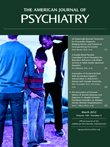Five New Schizophrenia Loci May Converge on the Same Cellular Mechanism: The AKT Pathway
To the Editor: The complexity of schizophrenia genetics raises new questions regarding the biological plausibility of findings from association studies (1). Is there a shared cellular mechanism for the diverse proteins encoded by the dozens of “schizophrenia genes”? The Schizophrenia Psychiatric Genome-Wide Association Study Consortium reported significant associations for five new gene loci (2). Here, we show that these loci are all associated with the neuregulin-1-induced activation of the phosphatidylinositol 3-kinase/protein kinase B/AKT1 intracellular system, which is an important convergence point for several putative factors of psychotic disorders including biogenic amines, synaptic proteins, and growth factors (3, 4). Decreased AKT1 protein levels and phosphorylation have been documented in lymphocytes and brains of individuals with schizophrenia (4–6). We genotyped 115 healthy volunteers for the following five loci: MIR137, PCGEM1, CSMD1, MMP16 (also associated with cancer), and CNNM2 (a metal ion carrier) (2). The AKT1 pathway, similarly to four of the five loci, is implicated in cell proliferation and differentiation. AKT1 activation was determined from peripheral lymphoblasts by using an immunoblot assay (5, 6). We also studied the extracellular signal-regulated kinase kinase (MEK-) extracellular signal-regulated kinase (ERK) pathway. Results revealed that the ratio of phosphorylated AKT1 (Ser473; 60 kDa) to total AKT1 was lower in risk-allele carriers (mean ratio averaged across the five foci, 0.21) relative to noncarriers (mean ratio, 0.39). This result was evident for all five foci (p<0.001 in all cases; Table 1). We did not observe similar changes in the case of ERK ratios. Our findings raise the possibility that the complex array of proteins encoded by “schizophrenia genes” converge on common intracellular molecular pathways that convert information from the environment to the biological system.
| Risk-Allele Carriers pAKT/AKT | Noncarriers pAKT/AKT | Mann-Whitney Test (AKT Ratio) | Risk-Allele Carriers pERK/ERK | Noncarriers pERK/ERK | ||||||||||
|---|---|---|---|---|---|---|---|---|---|---|---|---|---|---|
| Gene | Chromosome | Single-Nucleotide Polymorphism | Alleles | N (Risk) | Mean | SD | Mean | SD | Z | p | Mean | SD | Mean | SD |
| MIR137 | 1p21.3 | rs1625579 | TG | 95 | 0.22 | 0.15 | 0.45 | 0.11 | –5.45 | <0.0001 | 0.38 | 0.19 | 0.37 | 0.17 |
| PCGEM1 | 2q32.3 | rs17662626 | AG | 105 | 0.27 | 0.13 | 0.53 | 0.17 | –3.37 | 0.0001 | 0.41 | 0.12 | 0.43 | 0.16 |
| CSMD1 | 8p23.2 | rs10503253 | AC | 69 | 0.26 | 0.14 | 0.36 | 0.14 | –3.41 | 0.0007 | 0.40 | 0.14 | 0.44 | 0.14 |
| MMP16 | 8q21.3 | rs7004633 | GA | 18 | 0.14 | 0.15 | 0.32 | 0.14 | –3.94 | 0.0001 | 0.36 | 0.13 | 0.36 | 0.11 |
| CNNM2 | 10q24.32 | rs7914558 | GA | 19 | 0.16 | 0.15 | 0.29 | 0.13 | –3.39 | 0.0007 | 0.37 | 0.19 | 0.35 | 0.12 |
TABLE 1. AKT and Extracellular Signal-Regulated Kinase (ERK) Activation Relative to the Risk Alleles of Five New Schizophrenia Locia
1. : Allelic diversity in human developmental neurogenetics: insights into biology and disease. Neuron 2010; 68:245–253Crossref, Medline, Google Scholar
2.
3. : Roles of the Akt/GSK-3 and Wnt signaling pathways in schizophrenia and antipsychotic drug action. Am J Psychiatry 2010; 167:388–396Link, Google Scholar
4. : Convergent evidence for impaired AKT1-GSK3beta signaling in schizophrenia. Nat Genet 2004; 36:131–137Crossref, Medline, Google Scholar
5. : Neuregulin1-induced cell migration is impaired in schizophrenia: association with neuregulin1 and catechol-O-methyltransferase gene polymorphisms. Mol Psychiatry 2007; 12:946–957Crossref, Medline, Google Scholar
6. : Suppression of the P50 evoked response and neuregulin 1-induced AKT phosphorylation in first-episode schizophrenia. Am J Psychiatry 2010; 167:444–450Link, Google Scholar



